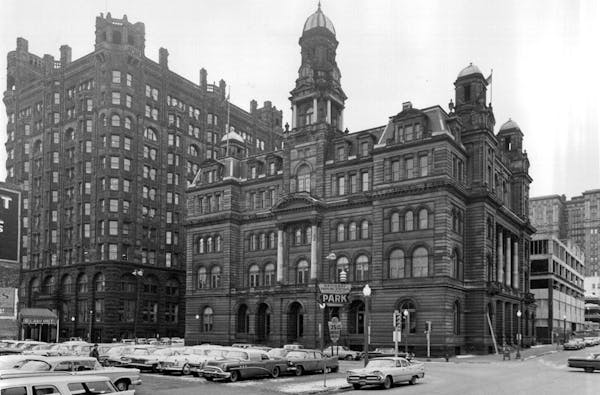It was an absolutely normal day downtown in the coldest place on Earth that doesn't start with "Si" and end with "beria."
An older woman in a wheelchair (grandma?) was laughing with a little kid in a stroller. Mom was on her phone. Dad was talking to the older fellow (grandpa?), who stood by the wheelchair. People passed the little group, some striding fast, some walking in pairs, chatting. There was the smell of coffee and fresh-baked bread in the air. A marvelous and simple tableau, utterly unremarkable.
Except for one thing: It took place in the skyways.
Not everyone thinks highly of these aboveground, indoor sidewalks. In some quarters, they're considered the Devil's Habitrail, responsible for kidnapping the vitality of the streets and killing ground-floor retail.
For others, however, knocking the skyways is like knocking indoor plumbing. Sure, we don't get to commune with nature when we head through the snow to the outhouse, but we'll consider the lack of frostbite on our hindquarters and call it even.
Our recent tenure in the deep freeze was a reminder of how the skyways make downtown not just livable, but unique.
Of course ground-floor retail is nice. Look at the old pictures of downtown Minneapolis and St. Paul. Storefronts abound with neon signs above tiny stores with individual missions: shoe repair, a haberdashery, a bakery, a hash house. The windows of the variety stores are crammed with an eclectic jumble of merchandise. The department stores show the latest fashions. Add some movie-theater marquees, some streetcars, people wearing hats, and you get a scene that strikes a deep chord with anyone who cherishes the glory days of downtown.
That was great. But that was then, and it's not going to happen again. At least not like that.
Why? For starters, downtown used to be populated by small buildings that were populated by small merchants. Those buildings are gone, wrecked by progress and prosperity.
The variety stores — the Kresge's, Woolworth's, the Grants — were indispensable in the pre-mall, pre-internet era. But no one goes downtown for nylons and mothballs anymore. And the modern economics of retail skew hard against someone who wants to open a hat shop.
Don't get me wrong. I'd love to have experienced the old style of downtown Minneapolis or St. Paul. But the cities changed in so many ways. One is the addition of the skyways, which turned Minneapolis into a modern Venice.
At least that's what modernist architect Philip Johnson said about the IDS Center, with its Crystal Court and many skyway connections.
Johnson, who designed the 1972 building, envisioned Minneapolis as a city of Venetian-like piazzas connected by indoor bridges, each with its own character and history. Our skyways and the office buildings they connect aren't as beautiful or as historic as Venice. But they're occupied, not a stage set for tourists. And you can get a good espresso in them.
The best part? You don't cry.
When it's 7 below and the wind's frisky, a trip outside works on your eyes. Sometimes it makes you weep when you finally get inside.
When it's warm, we can't wait to abandon the skyways. When it's brutal, we live upstairs, where you'll find a retail environment that many cities would love to have.
Our downtown streets, our commerce, our arteries of commerce and human interaction — they didn't die. We just moved them up a few yards so we can enjoy them when the weather is cruel.
Let's revisit that tableau. If the family I saw in the skyway had gathered on the street, do you think they would have chatted outside when the temps took a dive? Surely someone would have said "Let's get out of the cold."
We did.
And our cities are a happier place for it.
We might not conform to an ideal version of what a vibrant city should be, but we're getting along just fine.
Even better? We're warm.
![The view toward Target Center down 6th Street South. ] (AARON LAVINSKY/STAR TRIBUNE) aaron.lavinsky@startribune.com A look at the Minneapolis Skyway s](https://arc.stimg.co/startribunemedia/RZKNTRA5JAZGEPGSHS2EBNTTPI.jpg?fit=crop&crop=faces&w=550&&auto=format)






